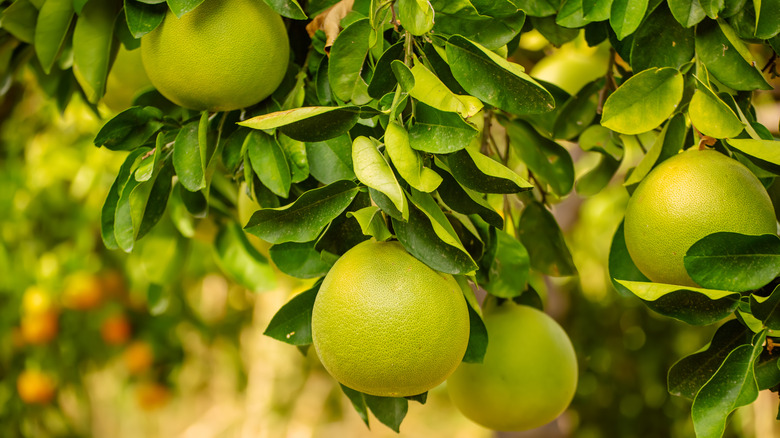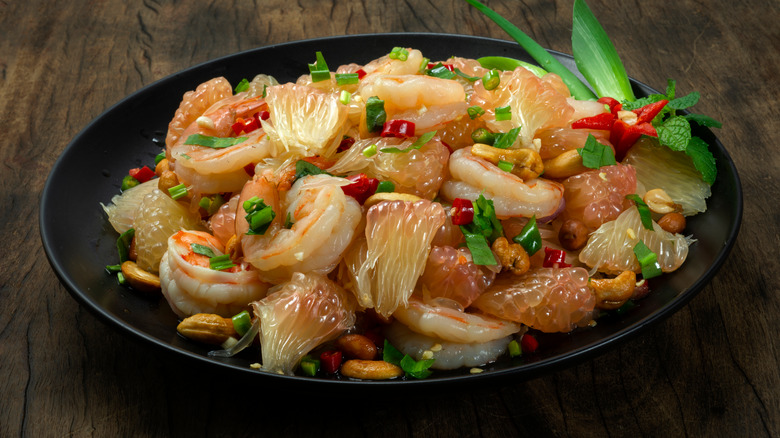What Is Pomelo And What's It Taste Like?
You'd be forgiven if you mistook a pomelo for an oversized grapefruit if you came across one in the supermarket. Pomelos are the world's largest citrus according to MasterClass. They regularly grow up to one foot in diameter and can easily weigh a few pounds. However, the actual fruit in the center is more akin to a grapefruit in size, as the thick pith between the outer rind and the fruit makes the pomelo appear much larger than the edible portion inside.
If you've gotten your hands on a pomelo, be sure to separate the fruit from the pith and discard the membrane holding the segments together. Use a knife and make slits to remove the skin and the pith to facilitate the process. While pomelos are less bitter than grapefruits, the pith and membrane are extremely bitter and unpleasant to eat (via MasterClass).
So, which came first: the grapefruit or the pomelo? According to Leafy Place, pomelos are one of three naturally occurring citrus plants, originating in Southeast Asia. Over the centuries, they were brought to the Caribbean and have since been cultivated in many tropical areas throughout the world, including California (via MasterClass). They have also been crossbred to create other citrus varieties. Those include grapefruit, which is a cross between the pomelo and wild orange.
How should you eat pomelo?
Organic Facts notes that the outer rind ranges from yellow to green, and the flesh from white to pink, even sometimes bordering on red. Different varieties of pomelo vary in terms of how sweet, tart, bitter and juicy they are, though they are generally slightly sweeter than grapefruit.
When looking for the perfect pomelo, pay attention to the fruit's appearance and smell. Choose heavier fruits with smooth shiny skin, fragrant and herbal aromas, and avoid any that look dry.
Pomelos can be eaten alone as a snack or sprinkled with chilis, added to a salad, or served with shellfish and fresh herbs such as mint, cilantro, and basil. The juice is delicious, too, and has enough acidity to tenderize meat or fish in a marinade, as MasterClass reports. The fruit can even be used in baking, grilled for a smoky touch, or as a refreshing sorbet. If you don't want to waste the rind, use it to make marmalade or candy.
Besides being a versatile addition to dishes, pomelos have cultural importance, too. In Asia, they are often a symbol of prosperity seen around the Lunar New Year, notes Fine Cooking. This might allude to the fruit's nutritional benefits which include high fiber and protein content, high levels of vitamin C, and significant quantities of potassium (via Very Well Fit). It's important to note that if you take any medications which interact with grapefruit, pomelos may also have a similar effect.

